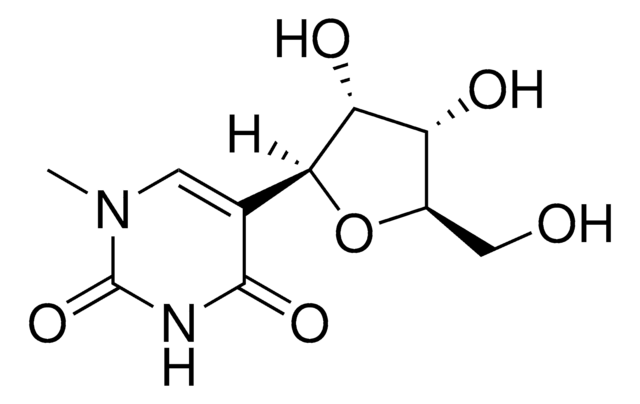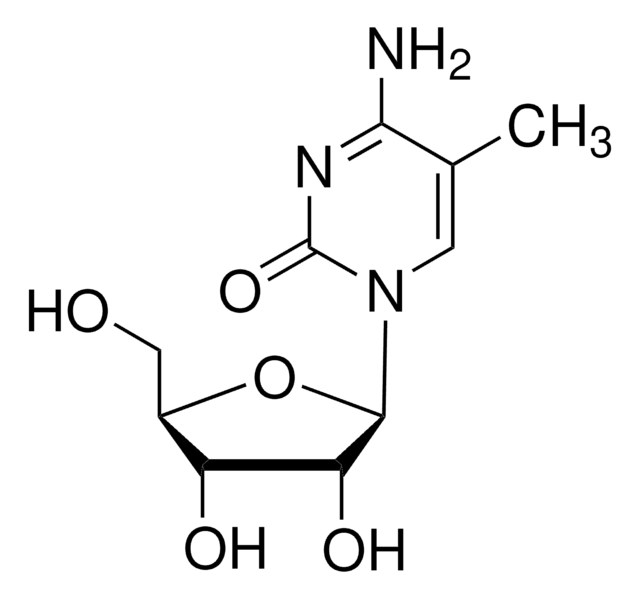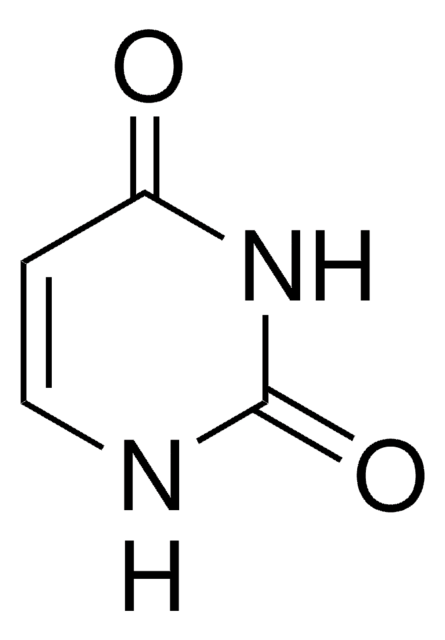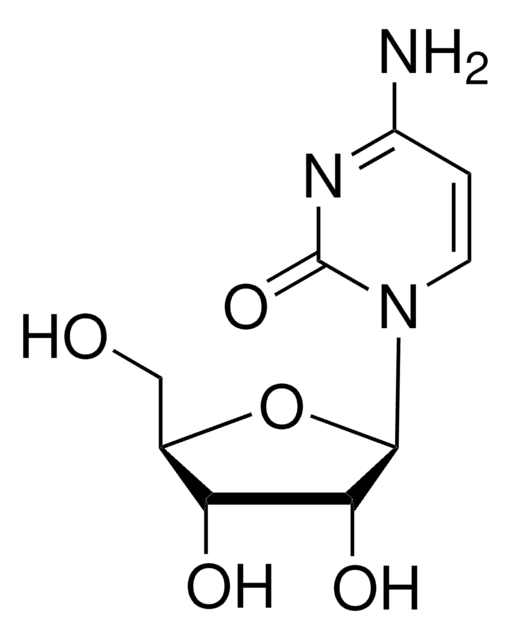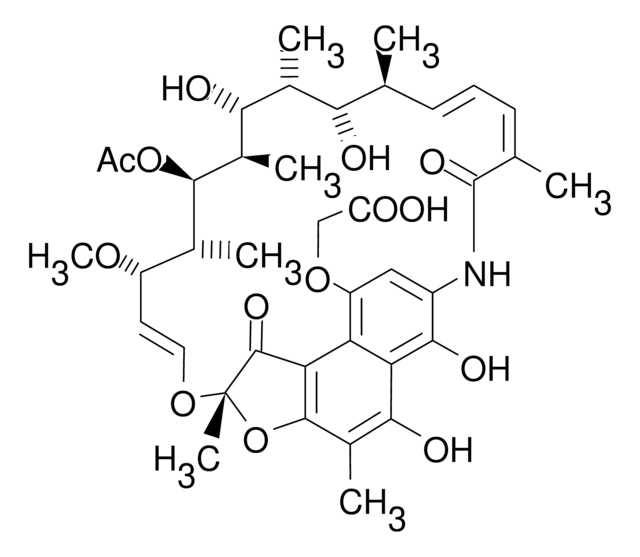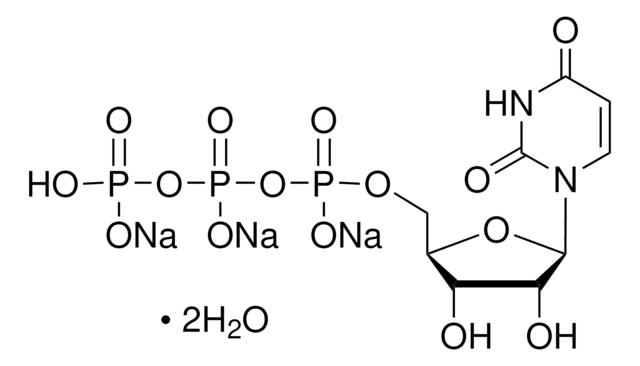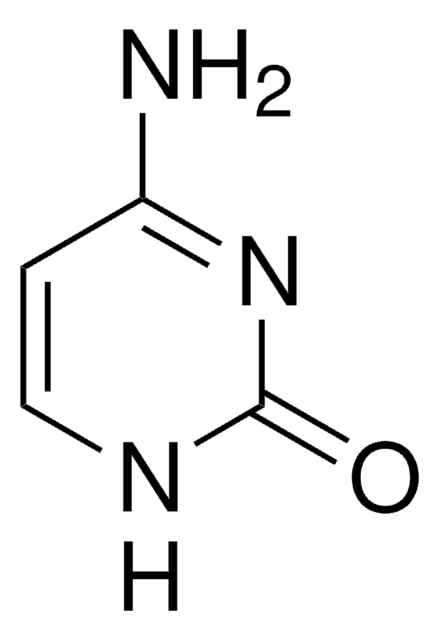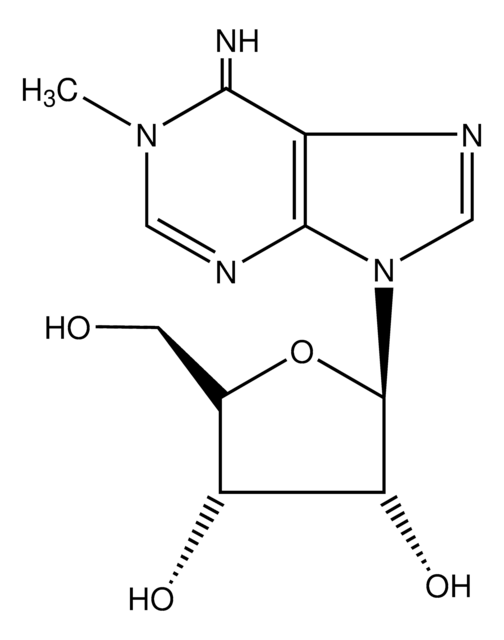SMB00912
Pseudouridine
≥98% (HPLC)
Synonym(s):
Pseudouridine, β-Pseudouridine, ψ-Uridine, 5-(β-D-Ribofuranosyl)uracil
About This Item
Recommended Products
biological source
synthetic (chemical)
Quality Level
Assay
≥98% (HPLC)
form
powder
mol wt
244.2
color
white to off-white
mp
222 °C ((432 °F ))
solubility
water: soluble
storage temp.
2-8°C
InChI
1S/C9H12N2O6/c12-2-4-5(13)6(14)7(17-4)3-1-10-9(16)11-8(3)15/h1,4-7,12-14H,2H2,(H2,10,11,15,16)/t4-,5-,6-,7+/m1/s1
InChI key
PTJWIQPHWPFNBW-GBNDHIKLSA-N
General description
Application
Features and Benefits
- High-purity compound suitable for a wide variety of research applications
Other Notes
Storage Class Code
13 - Non Combustible Solids
WGK
WGK 3
Flash Point(F)
Not applicable
Flash Point(C)
Not applicable
Choose from one of the most recent versions:
Certificates of Analysis (COA)
Don't see the Right Version?
If you require a particular version, you can look up a specific certificate by the Lot or Batch number.
Already Own This Product?
Find documentation for the products that you have recently purchased in the Document Library.
Our team of scientists has experience in all areas of research including Life Science, Material Science, Chemical Synthesis, Chromatography, Analytical and many others.
Contact Technical Service
